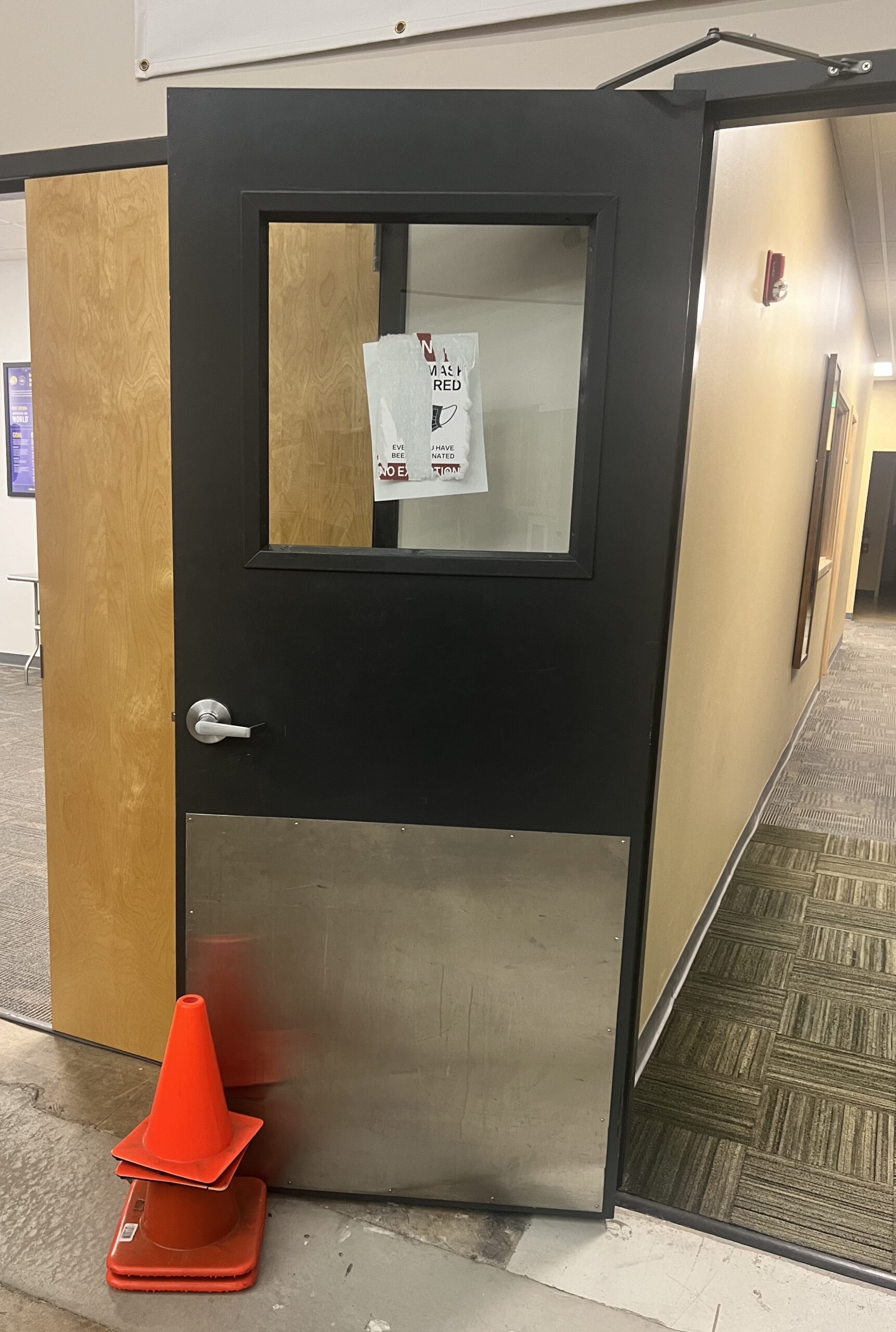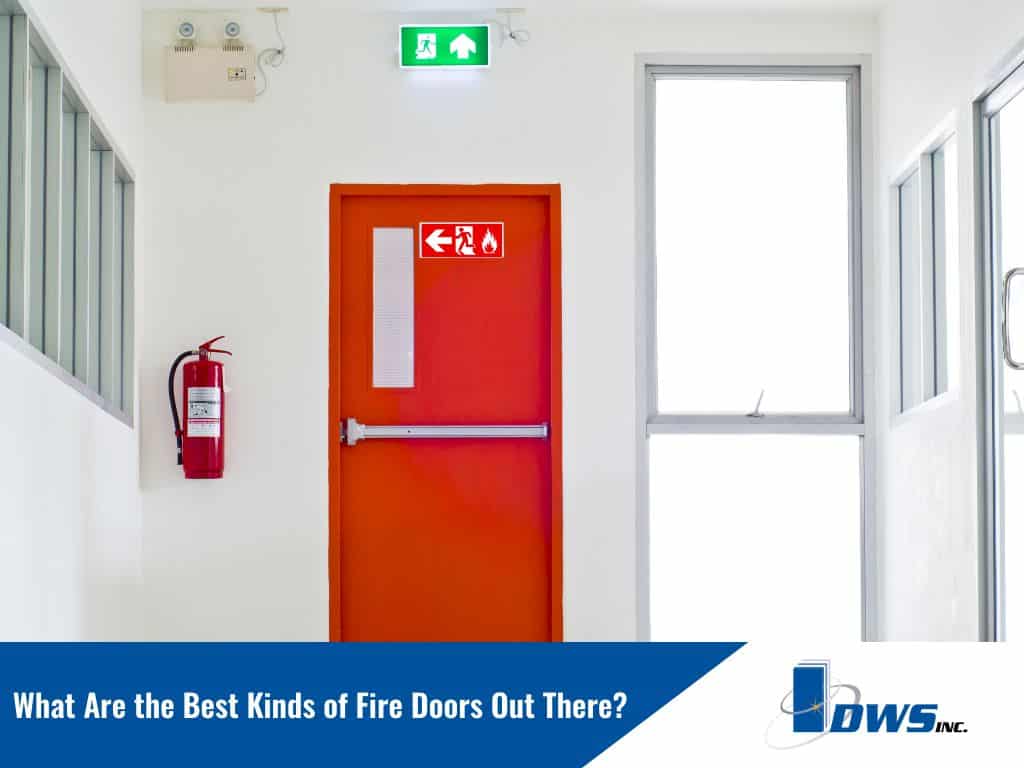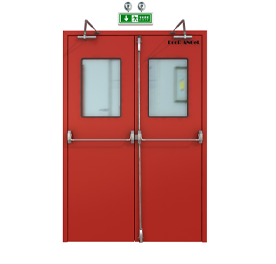Fire Doors: Secret Attributes to Try To Find When Choosing for Your Structure
Fire Doors: Secret Attributes to Try To Find When Choosing for Your Structure
Blog Article
Recognizing the Different Sorts Of Fire Doors for Enhanced Safety And Security
From typical fire-rated doors that shield against flames to acoustic fire doors that use both fire resistance and sound insulation, each type is developed with specific functions in mind. The assimilation of glass fire doors and the need of fire leave doors further highlight the multifaceted nature of fire door applications.
Requirement Fire-Rated Doors
Conventional fire-rated doors are a vital component in making certain structure safety and conformity with fire guidelines. These doors are especially created to resist the spread of fire and smoke, supplying crucial defense to owners and residential or commercial property. Constructed from materials such as steel, gypsum, and fireproof wood, they can withstand heats and keep architectural integrity for varying periods, normally ranging from 20 minutes to 3 hours.
The efficiency of common fire-rated doors is measured by their fire-resistance score, which is figured out through extensive screening under regulated conditions. This score suggests the period throughout which the door can contain flames and warm, consequently permitting added time for evacuation and emergency reaction. Furthermore, these doors commonly include intumescent seals that broaden when exposed to heat, further avoiding the passage of smoke and poisonous gases.
Installment of common fire-rated doors need to abide by rigorous building ordinance and criteria, such as those set by the National Fire Defense Organization (NFPA) and the International Structure Code (IBC) Routine examinations and upkeep are necessary to ensure that these doors work correctly in an emergency. Appropriately installed and kept fire-rated doors are important in enhancing overall building security and lessening fire-related risks.
Smoke Doors
Smoke doors play a critical role in fire safety by particularly dealing with the containment of smoke, which is usually extra unsafe than flames throughout a fire event. Smoke inhalation can result in extreme respiratory problems, disorientation, and also fatalities, making smoke doors an important component in emergency preparation. These doors are designed to limit the motion of smoke in between various areas within a structure, consequently offering safer discharge courses and decreasing possible damages to property.

In addition, smoke doors are commonly outfitted with automatic closing devices, caused by smoke detectors or smoke alarm, to ensure they close without delay during an emergency. By including smoke, these doors aid maintain reduced temperature levels and more clear exposure in getaway routes, making them an essential aspect in thorough fire safety methods. Their proper setup and upkeep are vital to ensure optimal performance when most needed.
Acoustic Fire Doors
Acoustic fire doors provide a dual feature in both fire safety and security and sound depletion, making them a useful addition to buildings where noise control is vital. These doors are engineered to not just meet strenuous fire resistance requirements yet also to considerably minimize audio transmission, thereby enhancing overall structure performance.
The construction of acoustic fire doors commonly includes a mix of thick materials and specialized seals. These components function together to develop an efficient obstacle versus both fire and sound. High-density cores, such as mineral boards or composite materials, are typically used in the door fallen leave to take full advantage of audio insulation. Furthermore, the door framework and seals are developed to preserve acoustic honesty while providing robust fire resistance.
Acoustic fire doors are specifically valuable in environments where personal privacy and quiet are critical, such as medical facilities, resorts, and academic organizations. They aid to preserve a peaceful atmosphere by lessening the transmission of sound between rooms or passages while making sure conformity with fire safety and security laws. Along with their useful advantages, these doors can be tailored to blend seamlessly with the building appearances of a structure, making sure that safety does not come with the expenditure of style.

Glass Fire Doors
Glass fire doors, regularly made use of in contemporary architectural layouts, use a mix of openness and safety that standard fire doors can not match. These doors incorporate the visual charm of glass with vital fireproof residential or commercial properties, making them an optimal choice for modern buildings. Engineered with specialized fireproof glazing, glass anonymous fire doors can stand up to heats and protect against the spread of flames and smoke for a defined duration, normally varying from 30 to 120 minutes.
The construction of glass fire doors includes multiple layers of solidified glass, often treated with intumescent products that expand when revealed to warmth, additional enhancing their fireproof abilities. These doors are not just practical in regards to fire safety and security however additionally enable natural light to penetrate via spaces, adding to energy efficiency and a more inviting setting.
Furthermore, glass fire doors can be integrated with different framework materials such as steel or aluminum, which give additional structural support and durability. Using such doors is specifically helpful in commercial, instructional, and medical care setups where presence and safety and security are critical. By fulfilling rigorous fire security regulations and preserving an open, contemporary aesthetic, glass fire doors represent a crucial development in fire-resistant building and construction.

Fire Escape Doors
Fire departure doors are an essential element of any type of structure's safety and security framework, made to provide a swift and protected ways of egress during emergency situations. These doors are strategically located to guarantee passengers can quickly and safely evacuate the premises in the event of a fire or other hazardous situations. Unlike basic doors, fire leave doors have to adhere to strict regulative criteria, guaranteeing they can execute dependably under duress.
A crucial attribute of fire escape doors is their capability to open up easily from the within, normally equipped with panic bars or push pads. This style great site promotes fast evacuation and avoids traffic jams that can happen during high-stress circumstances. Furthermore, fire departure doors are often built from fireproof materials to avoid the spread of fires and smoke, thereby providing crucial added time for discharge and firefighting initiatives.
An additional important facet is the clear signs and illumination connected with fire escape doors. Appropriate signage guarantees that these exits are easily identifiable even in low-visibility this post problems. Routine upkeep and examinations are vital to guarantee that these doors function appropriately when required. Inevitably, the performance of fire escape doors is a vital aspect in guarding lives and reducing property damages during emergency situations.
Final Thought
In recap, recognizing the different sorts of fire doors, consisting of typical fire-rated doors, smoke doors, acoustic fire doors, glass fire doors, and fire escape doors, is necessary for enhancing security in buildings. Each kind offers details benefits, from fire and smoke control to seem insulation and visual combination, making certain comprehensive defense. Fire doors. Regular upkeep and compliance with safety and security requirements are essential to ensure their performance in safeguarding passengers and facilitating risk-free evacuation during emergency situations
Report this page